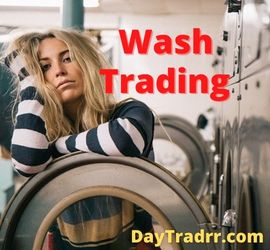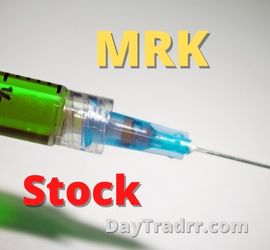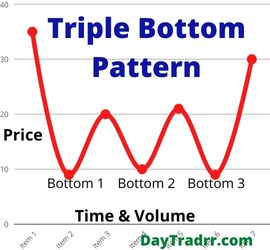What Is Wash Trading for Cryptocurrency and Securities?

Wash trading occurs when a buyer and seller conspire to deceive the market by artificially inflating the value of a stock or cryptocurrency. They do this without incurring any actual risk or altering their trading positions. The buyer and seller basically move the security and monies back and forth, but only the first transaction is publicly recorded. The second exchange simply restores the security and money to its original owners, taking place behind closed doors. The federal government outlawed wash trading with the Commodity Exchange Act in 1936. However, it has recently come under attention again with the emergence of high-frequency trading and cryptocurrency exchanges.
In other words, a wash trade is a type of fictitious trade. A transaction or series of transactions gives the appearance of genuine purchases and sales. However, the trades were entered without the intent to take a genuine market position or to execute genuine transactions subject to market risk or price competition. As a result, the SEC has determined that wash trading has only one motive. It is done for the express purpose of feeding misleading information to the market. In some situations, wash trades are executed by a trader and a broker who are colluding with each other. Other times, wash trades are executed by investors acting as both the buyer and the seller of the security or cryptocurrency. Wash trading is illegal under U.S. law. Further, the IRS bars taxpayers from deducting losses that result from wash trades from their taxable income.
Wash Trading is Illegal
The federal government initially prohibited wash trading with the passing of the Commodity Exchange Act in 1936. This revised the Grain Futures Act and forced all commodity trading to take place on regulated exchanges. Prior to its prohibition in the 1930s, wash trading was a common strategy for stock manipulators. The empty trades gave the appearance of interest in a particular security in order to boost its value. Then, the manipulators could profit by shorting the company knowing there was no underlying value in the surging volume.
Brokers are also prohibited by Commodity Futures Trading Commission (CFTC) laws from benefitting from wash transactions. Even if they claim they were unaware of the trader’s intentions. As a result, brokers must conduct due diligence on their clients to ensure that they are purchasing shares in a firm for the purpose of shared beneficial ownership. The IRS also has severe laws against wash transactions and compels taxpayers not to deduct losses from wash trades. A wash trade is one that happens within 30 days after the purchase of the security and results in a loss, according to the IRS.
Wash Trading – High-Frequency & Cryptocurrency Trades
Wash trading made a comeback in 2013, just as the phenomena of high-frequency trading was gaining traction. High-frequency trading is the process of performing tens of thousands of transactions per second. It requires super-fast computers and high-speed Internet connections. Starting in 2012, then-Commodity Futures Trading Commission Commissioner, Bart Chilton stated his intention to investigate the high-frequency trading business. The Commissioner specifically cited potential breaches of wash trading regulations. The lightning-fast trading methods using this technology would make wash trading easy to do and difficult to detect.
- The Securities and Exchange Commission (SEC) charged Wedbush Securities in 2014 with failing “to maintain direct and exclusive control over settings in trading platforms used by its customers,” allowing some of its high-frequency traders to engage in wash trades and other illegal and manipulative behavior. (Source: sec.gov)
- Bitcoin Exchange Trade – Wash trading has also been discovered to have a part in the bitcoin exchange trade. According to Blockchain Transparency Institute data, more than 80% of the top 25 trading pairs for bitcoin on cryptocurrency exchanges in 2018 were wash traded. (Source: blokt.com)
Wash Trading on Cryptocurrency Exchanges
Research shows that many cryptocurrency exchanges continue to engage in serious wash trading practices despite being exposed for their wrongdoing. Of the 24 exchanges analyzed, only four exchanges have been reporting their real trading volume with more than 90% accuracy. The four exchanges reporting the most accurate trading volumes are Coinbase Pro, Poloniex, Gemini, and Bitstamp.
Many Cryptocurrency Exchanges Continue to Engage in Wash Trading since we published our wash trading report. Ten exchanges were found to have wash traded their volumes up to over 70%. The ten exchanges are HitBTC, EXMO, MXC, Biki, Bgogo, Bibox, DragonEx, LBank, CoinEgg and CoinMex.(Source:tokeninsight.medium.com)
Examples of Wash Trading
For example, consider an investor who has 100 shares of Peach Semiconductor Corp and sells them on January 1 for a loss of $1,000. The investor then purchases 100 shares of the same company stock on January 25th and makes a profit of $5,000. The wash trade has not yet occurred technically. However, when the investor attempts to claim a tax deduction for his original $1,000 loss, the wash trade is triggered. If he takes the deduction, the investor’s $5,000 gain is offset by the $1,000 deduction. It implies he pays fewer taxes on his earnings. This is despite the fact that he still owns the same amount of shares as before.
The Internal Revenue Service (IRS) of the United States takes the position that the investor owes taxes on the whole $5,000 gain from the subsequent transaction. This is because the purchase was completed within the 30-day deadline. In effect, the real wash sale window is 61 days long. It encompasses 30 days before the sale, 30 days after the sale, and the day of the sale.
Cryptocurrency Example
Wash trades can also be used to generate fake volumes for cryptocurrencies thereby pumping up their prices. Suppose a pair of traders collude to buy and sell Bitcoins rapidly. Noticing activity, other traders may jump into the Bitcoin market to try to profit from the apparent price and volume movements.
According to a report submitted to the U.S. SEC by Bitwise in March 2019, “wash trading” is currently a very serious problem that exists in the cryptocurrency market. It was stated that true trading volume of the overall market accounted for only roughly 4.5% of reported volumes, and only 10 exchanges have reported figures representing true trading volume. The report exposing the wash trading was made public by the research institution for the first time, and it shocked all the market participants. (Source: tokeninsights.medium.com)
Up Next: What Is a Utility Patent?
 A utility patent covers the development of new or improved products, processes, or equipment preventing others from using them without a license or permission. A utility patent is often known as a patent for innovation. It prevents others from creating, using, or selling the invention without permission. When most people talk about patents, they’re usually talking about utility patents.
A utility patent covers the development of new or improved products, processes, or equipment preventing others from using them without a license or permission. A utility patent is often known as a patent for innovation. It prevents others from creating, using, or selling the invention without permission. When most people talk about patents, they’re usually talking about utility patents.
Utility patent applications are filed in order to protect innovative new or improved inventions, systems, and other beneficial ideas. A utility patent is one of the most valuable types of intellectual property, yet it is not free. The expense of obtaining a utility patent might be quite significant. Utility patents for basic ideas can cost a few thousand dollars. However, complicated technology might cost tens of thousands of dollars.




